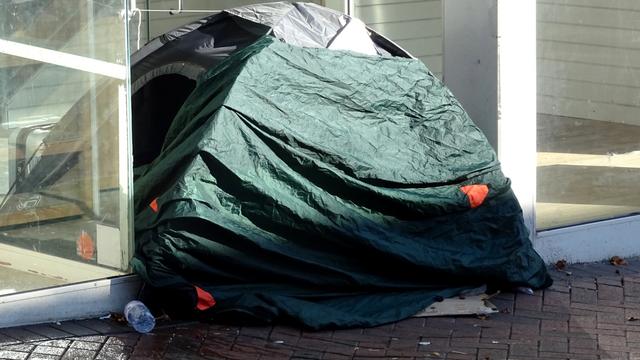With the injunction lifted, the City of Hamilton will remove certain homeless encampments
Published October 7, 2020 at 5:59 pm

With the lifting of a Superior Court injunction, the City of Hamilton will again be enforcing its bylaws prohibiting encampments on public property.
With the lifting of a Superior Court injunction, the City of Hamilton will again be enforcing its bylaws prohibiting encampments on public property.
The injunction was in effect from July 30 to Oct. 6 — temporarily restricting the City’s authority to enforce bylaws that prohibit camping on public property.
The lifting of the injunction follows an agreement between the City of Hamilton and advocacy groups, Keeping Six and HAMSMaRT, that would see a new individualized and discretionary approach to enforcing the no camping by law. It also sets parameters around where and how big encampments can be located.
“High acuity people who remain in encampments are subject to a number of restrictions, including limiting encampments to five people, avoiding sidewalks, roadways and boulevards, not encamped at designated heritage properties and being at least 50 metres away from playgrounds, schools or childcare centres,” according to the City of Hamilton.
The agreement also calls on all parties to continue to advocate for increased provincial funding for suitable housing.
“The City has remained committed to the health and safety of all residents during the COVID-19 pandemic,” said Mayor Fred Eisenberger. “These efforts include aiding our most vulnerable residents who are sleeping rough to find safer and more humane housing options.”
Since the beginning of the pandemic, the city has seen an increase in the number of people sleeping rough in public spaces, including outside the First Ontario Centre, along Ferguson Avenue, and in several City parks.
“In the coming weeks, all of our energy will go to helping the people living in those encampments move with dignity and support,” said organizers from Keeping Six and HAMSMaRT in a joint statement.
“We and others are currently working with the City to ensure access to hotel, shelter and housing, as well as storage and transportation. We will work closely with those who won’t be able to access indoor spaces to ensure that the new protocol is understood and that people are supported and connected to resources of their choosing.”
Organizers added that they’re relieved to be moving away from legal battles with the City of Hamilton in order to refocus their efforts on working directly with those experiencing homelessness and those who use drugs.
Those in prohibited areas will need to move immediately, according to City staff, while those with “lower acuity” will engage with outreach workers on a plan to move to a shelter within 14 days.
Meanwhile, those with high acuity “will be engaged on an ongoing basis to look for appropriate accommodations and supports, but may remain on the street longer than 14 days, until such time that appropriate supports can be located,” said the City of Hamilton in an official statement.
Staff has said that in order to respond to the increase in encampments, additional funding and staff time was required for security, waste collection, and outreach.
The City says it also experienced increased calls for service for paramedics and police.
According to statistics provided by staff, persons with complex needs, also known as people with high acuity, make up 25 to 30 per cent of the current encampment populations and eight per cent of the homeless population overall.
In general, people requiring a greater degree of observation and intervention receive a higher acuity rating.
insauga's Editorial Standards and Policies advertising





